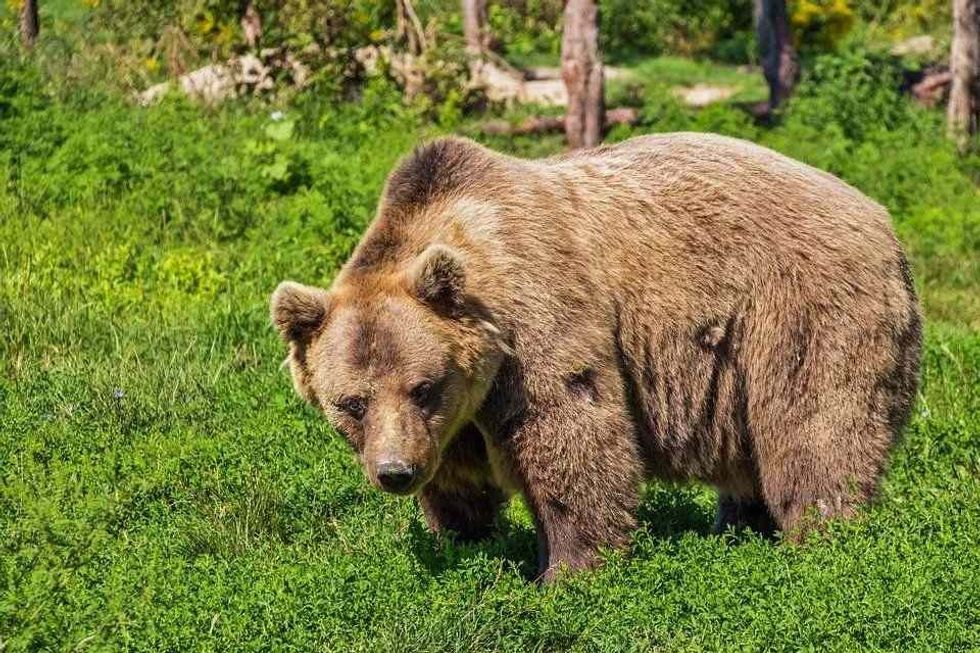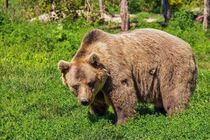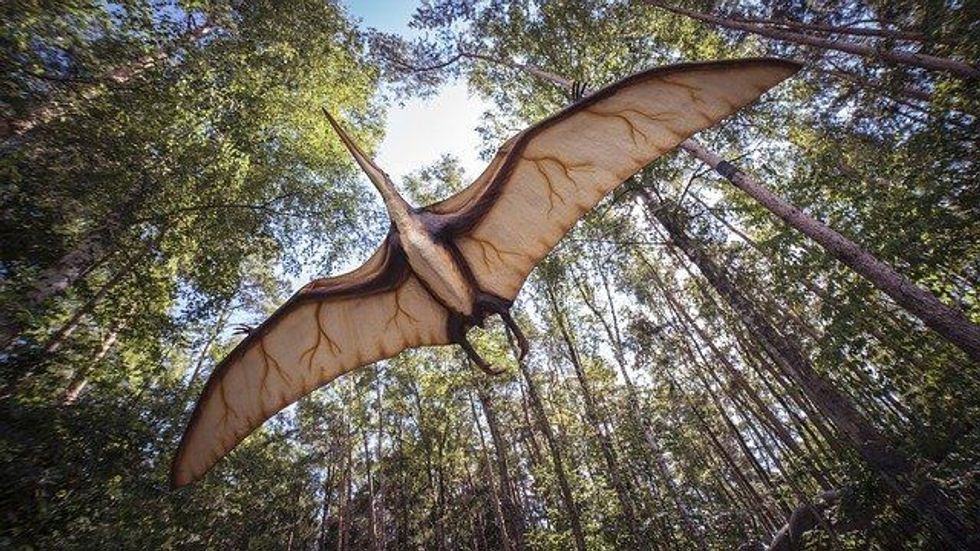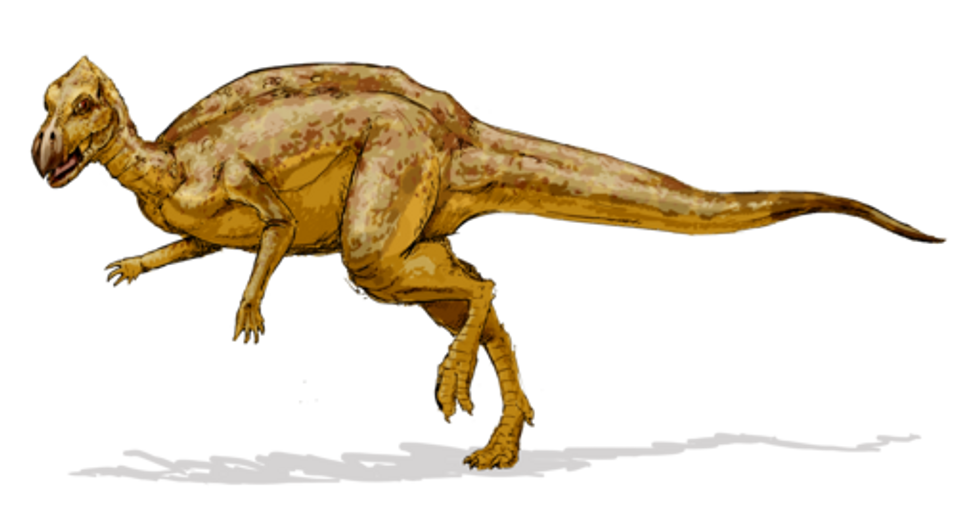Fun Cave Bear Facts For Kids

Are you fascinated by the Ice Age? Then get ready to know about a special kind of bear which existed tens of thousands of years ago and has since gone extinct.
We present to you the cave bear.
These gigantic bears lived during the Ice Age in caves.
Cave bear remains like cave bear skeletons, cave bear skulls, and ancient DNA remains have been found in many caves spread all across Europe. When these cave bear skulls and cave bear skeletons have been tested they have shown that the cave bear's genetic pool is a lot similar to the evolved, present-day brown bear.
These bears were huge in size and in comparison to normal bears they were roughly three times as large in size and almost five times in terms of weight! The skeletons of cave bears are still found and examined in many European caves and more data is being drawn from them every day.
These bears were primarily herbivorous and thus had a vegetarian diet, however, cave bear dental analysis shows that they could have consumed flesh in times of need.
Continue reading to know more about cave bear worship, dental microwear analysis of the cave bear, numbers of cave bear populations, and hibernating cave bears. If you find our content interesting then do check out these facts about the Asiatic black bear and the Javan rhinoceros too.
Cave Bear Interesting Facts
What type of animal is a cave bear?
As is evident from its name, the cave bear (Ursus spelaeus) was a species of bear. This species of bear belonged to the Ursidae family and is said to have gone extinct some 24,000 years ago.
What class of animal does a cave bear belong to?
Ursus spelaeus cave bears belonged to the class of Mammalia of the kingdom Animalia.
How many cave bears are there in the world?
Presently there are no cave bears present in the world. This is due to the fact that this species went extinct almost 24,000 years ago.
Making an estimate of the total population of this species is also difficult owing to the very limited information and data on this specific species of bear.
However, European caves and Asian caves, where this bear was prevalent during the late Pleistocene age, have yielded almost 100,000 skeletons and other remains of the cave bear. So we can estimate that the total population of this species was greater than 100,000 on earth.
Where did the cave bear live?
Cave bears lived in caves located across Europe and Asia during the Pleistocene age which lasted for almost 2,568,300 years. Major locations where the skeletal remains of the cave bear have been found are Romania, England, Austria, Russia, Germany, Spain, Greece, and Italy. Research also shows that these animals could have lived in north Africa.
What was a cave bear's habitat?
As evident from their names, caves were the main shelter and living spot for these large bears.
A major portion of the habitat of the cave bears included low mountain slopes, forest terrains, and caves that were built in limestone. These bears were known to spend a comparably greater amount of their lifespan in caves in comparison to today's brown bears or black bears.
These animals avoided open forest lands, and since the earth was relatively cold in the late Pleistocene age, caves provided perfect comfortable spots for these animals.
Who do cave bears live with?
Owing to very limited data and information on this species of animal, the exact social behavior of the cave bear cannot be determined properly. However, we can make an assumption by comparing them with other species of bears, since the cave bear is known to have evolved from the Etruscan bear.
Bears are known to be solitary animals and they tend to prefer staying on their own.
This pattern is usually broken during the mating or breeding season, or when a mother bear takes care of her cubs. Thus we can assume that the cave bears too could have been solitary animals, much like today's bears.
How long does a cave bear live?
Though there is no accurate proof about their exact lifespan, scientists assume that the lifespan of cave bears was around 20 years. A lot of cave bears were known to die young from various ailments and injuries from fighting with one another.
How do they reproduce?
There is no adequate information regarding the reproduction of cave bears. Scientists assume that interbreeding was common though.
Research has shown that the genome of the cave bears has survived until today. Their gene pool is now found in their descendants, black and brown bears. Scientists have concluded that males would often fight with one another during the breeding season to win over a female for mating.
What is their conservation status?
The cave bear (Ursus spelaeus) was a prehistoric animal that lived during the Pleistocene age.
Though they are said to have originated on earth some 5.3 million years ago, there are still debates about their time of extinction. Some research shows that this bear species went extinct 10,000 years ago, while other researchers are of the opinion that the cave bear perished 24,000 years ago.
Despite this debate, it is clear that the animal is extinct today, and only cave bear remains and cave bear bones are left behind by this giant bear species.
Cave Bear Fun Facts
What do cave bears look like?
Cave bears were animals of gigantic stature. They had skulls that were domed in shape and broad in nature accompanied by a steep forehead.
Similar to a brown bear, the cave bear had huge legs and in-turning feet. In terms of cave bear teeth, they didn't have premolars but had an elongated molar. The skeletal structures of these bears often bear similarities with modern-day polar bears and Kodiak bears.
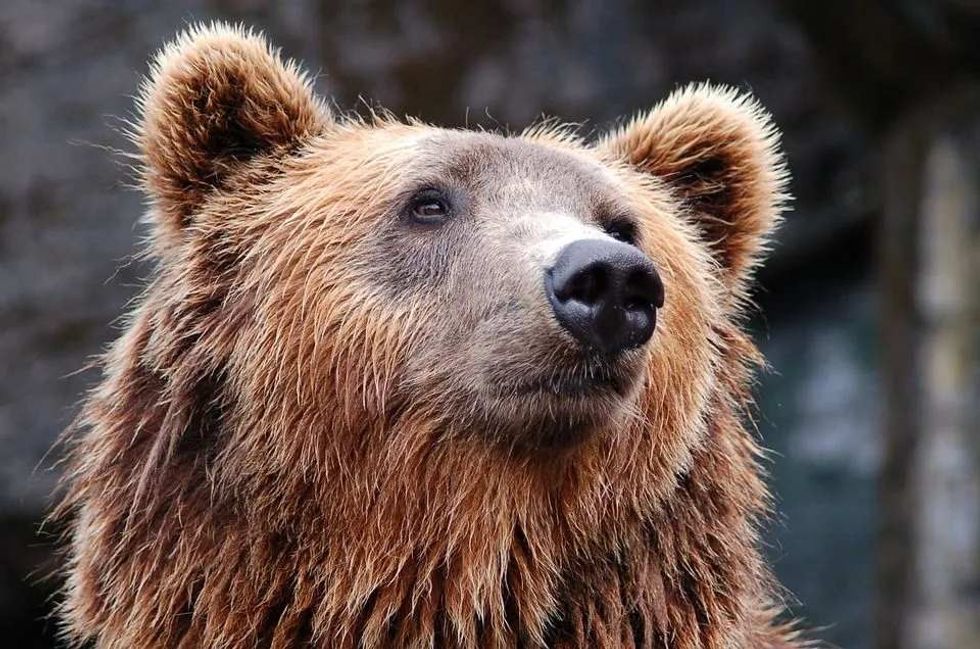
How cute are they?
Bears are royal and majestic beasts and the cave bear was no exception to this. These prehistoric animals were magnificent and adorable giants.
How do they communicate?
Cave bears (Ursus spelaeus) were present during the Ice Age and gradually became extinct almost 24,000 years ago. Though these animals may have come into contact with early humans, not much is known about this species of bear.
However, we can make guesses about their communication and behavior by comparing them with other bears. It has been determined that today's bears, such as black and brown bears are said to have originated from the evolved species of the Etruscan bear which was a relative of cave bears.
Marking areas and places are the most important means of communication for these bears.
Bears will mark areas like trees by scratching them with their powerful claws. They are also known to mark areas with their scent using pheromones.
How big is a cave bear?
Cave bears (Ursus spelaeus) were gigantic animals and they used to measure a staggering 11.5 ft (3.5 m) when they stood upright on their two hind legs. In comparison to the black bear which attains a maximum height of 5-7 ft (1.5-2.1 m) while standing upright, the cave bear was almost twice the latter's size!
How fast can a cave bear run?
Owing to insufficient data, the speed at which the cave bears used to run is unknown.
How much does a cave bear weigh?
The cave bear (Ursus spelaeus) was a large animal and this is evident from their large physical structure and their weights. Upon close examination, research, and analysis of cave bear remains and cave bear bones, scientists have concluded that these gigantic beasts had an average weight of 800-2200 lb (400-1000 kg).
In comparison with an average size black bear, which weighs roughly around 90-661 lb (41-300 kg), we can conclude that the cave bear was almost three to four times the size of the black bear.
What are their male and female names of the species?
Similar to what other bears are called, male cave bears would have been termed 'boars' while a female cave bear would be referred to as a 'she-bear' or a 'sow'.
What would you call a baby cave bear?
Since cave bears were a species of bear, a baby cave bear was referred to as a 'cub', or more accurately a baby cave bear cub.
What do they eat?
Dental remains and dental structures of cave bears have shown us that cave bears mainly were herbivorous in nature and had a vegetarian diet. Different types of plants and roots were consumed by these largely vegetarian bears.
However, scientists haven't ruled out the possibility of them eating flesh. It has been assumed that these animals could have been omnivorous and may have consumed the flesh of smaller animals which they hunted whenever food was scarce in the vicinity of their habitat.
Are they poisonous?
There is no evidence that suggests that the cave bears were poisonous animals. Moreover, in nature today bears are not poisonous animals and thus it can be safely assumed that cave bears were not poisonous animals.
Would they make a good pet?
No, a cave bear (Ursus spelaeus) would not make a good pet for humans, in fact, it is impossible to keep them as pets as they became extinct 24,000 years ago!
Did you know...
Scientists have collected a genome sample of a cave bear (Ursus spelaeus) from a Spanish cave and discovered the DNA of the animal.
Why did the cave bear go extinct?
Scientists often debate how cave bears went extinct.
While a portion of scientists claim that the expansion of humans is directly responsible for the gradual decline of the species, others think that climate change played a vital role in the extinction of this species of bears.
Early humans are known to have set foot on earth around 7 million years ago, well before the extinction of the species of the cave bear.
Thus naturally, humans are bound to have come in contact with these animals and could have even hunted them from their caves.
The other theory states that climate change was largely responsible for their extinction. These animals went extinct during the last glacial maximum of the Ice Age.
After that, the earth started becoming warmer and warmer which was unusual for these animals that were predominantly accustomed to permafrost climatic habitat conditions. A lot of these animals also perished during their hibernation which lasted for months.
Meanwhile, dwarfs or young ones often contracted numerous diseases. Lastly, these bears were known to compete with one another during the breeding season and that led to numerous injuries and often cost the lives of these bears.
Cave bears vs. grizzly bears
There are significant differences between grizzly bears and cave bears. Cave bears were much larger in size and shape.
When standing upright a grizzly bear measures around 8 ft (2.4 m) in length. The cave bear on the other hand measures a staggering 11.5 ft (3.5 m). The weight of the grizzly ranges from 267-595 lb (121-270 kg) while an average cave bear measured around 800-2200 lb (400-1000 kg).
Here at Kidadl, we have carefully created lots of interesting family-friendly animal facts for everyone to discover! Learn more about some other mammals from our leopard seal facts and fennec fox facts pages.
You can even occupy yourself at home by coloring in one of our free printable cave bear coloring pages.
* Please note that the main image is of a brown bear, not a cave bear. If you have an image of a cave bear please let us know at hello@kidadl.com.
We Want Your Photos!
More for You
See All
Bachelor of Arts specializing in Journalism and Mass Communication, Postgraduate Diploma in Sports Management

Moumita DuttaBachelor of Arts specializing in Journalism and Mass Communication, Postgraduate Diploma in Sports Management
A content writer and editor with a passion for sports, Moumita has honed her skills in producing compelling match reports and stories about sporting heroes. She holds a degree in Journalism and Mass Communication from the Indian Institute of Social Welfare and Business Management, Calcutta University, alongside a postgraduate diploma in Sports Management.
Bachelor of Arts specializing in Economics

Gowri RaoBachelor of Arts specializing in Economics
With a bachelor's degree in Economics from Krea University, Gowri is a highly skilled data analyst and an expert in regression and causation modeling. Her interests in economic trends, finance, and investment research complement her professional expertise. In addition to her professional pursuits, Gowri enjoys swimming, running, and playing the drums, and she is also a talented tutor.
Disclaimer
1) Kidadl is independent and to make our service free to you the reader we are supported by advertising. We hope you love our recommendations for products and services! What we suggest is selected independently by the Kidadl team. If you purchase using the Buy Now button we may earn a small commission. This does not influence our choices. Prices are correct and items are available at the time the article was published but we cannot guarantee that on the time of reading. Please note that Kidadl is a participant in the Amazon Services LLC Associates Program, an affiliate advertising program designed to provide a means for sites to earn advertising fees by advertising and linking to Amazon. We also link to other websites, but are not responsible for their content.
2) At Kidadl, we strive to recommend the very best activities and events. We will always aim to give you accurate information at the date of publication - however, information does change, so it’s important you do your own research, double-check and make the decision that is right for your family. We recognise that not all activities and ideas are appropriate for all children and families or in all circumstances. Our recommended activities are based on age but these are a guide. We recommend that these ideas are used as inspiration, that ideas are undertaken with appropriate adult supervision, and that each adult uses their own discretion and knowledge of their children to consider the safety and suitability. Kidadl cannot accept liability for the execution of these ideas, and parental supervision is advised at all times, as safety is paramount. Anyone using the information provided by Kidadl does so at their own risk and we can not accept liability if things go wrong.
3) Because we are an educational resource, we have quotes and facts about a range of historical and modern figures. We do not endorse the actions of or rhetoric of all the people included in these collections, but we think they are important for growing minds to learn about under the guidance of parents or guardians.

